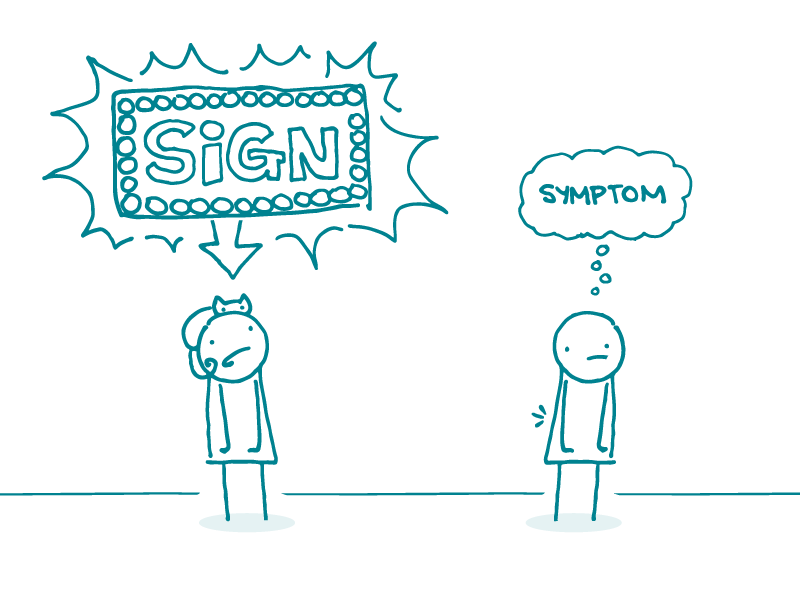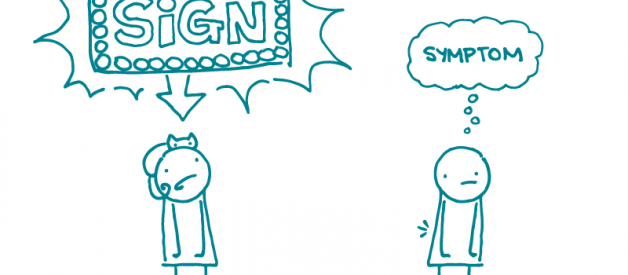 alt: The word ?sign? on a glowing sign points at a doodle?s head, which has a cat sitting on it. The word ?symptom? in a thought bubble floats above a second doodle who?s experiencing pain in their body.
alt: The word ?sign? on a glowing sign points at a doodle?s head, which has a cat sitting on it. The word ?symptom? in a thought bubble floats above a second doodle who?s experiencing pain in their body.
This week we?re addressing the difference between a couple terms that are easy to confuse when writing health information. ?Symptom? and ?sign? are often used interchangeably when talking about the health effects of conditions or diseases ? but guess what? They aren?t actually the same at all.
Ever heard the saying, ?Beauty is in the eye of the beholder?? Well, our favorite way to remember the difference between these similar words is that it?s in (you guessed it!) the eye of the beholder. In other words, whether something is a sign or a symptom depends on who?s able to notice it.
Technically speaking, a symptom is something that only the person experiencing it can observe. A sign is something that other people can observe, too. So instead of thinking about the health effect itself, think about the person who notices it. Symptoms are what a patient feels (like a headache) and signs are what a doctor can see or measure (like high blood pressure).
Now that you know the difference, dear readers, here?s a curve ball. For some audiences, ?symptom? is an unfamiliar word. And since both signs and symptoms fall into the category of ?things that happen when you?re sick,? it may be appropriate to use ?sign? regardless of who notices it.
The bottom line: A symptom is something only you know is there. A sign is something other people can notice.
Tweet about it: Ever wonder about the difference between signs and symptoms? http://bit.ly/JKUcGN #HealthLit via @CommunicateHlth


